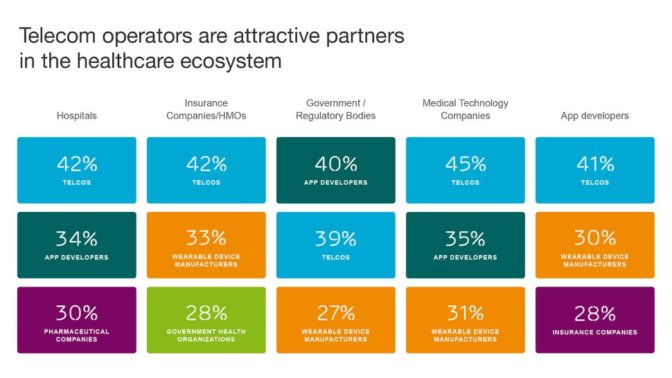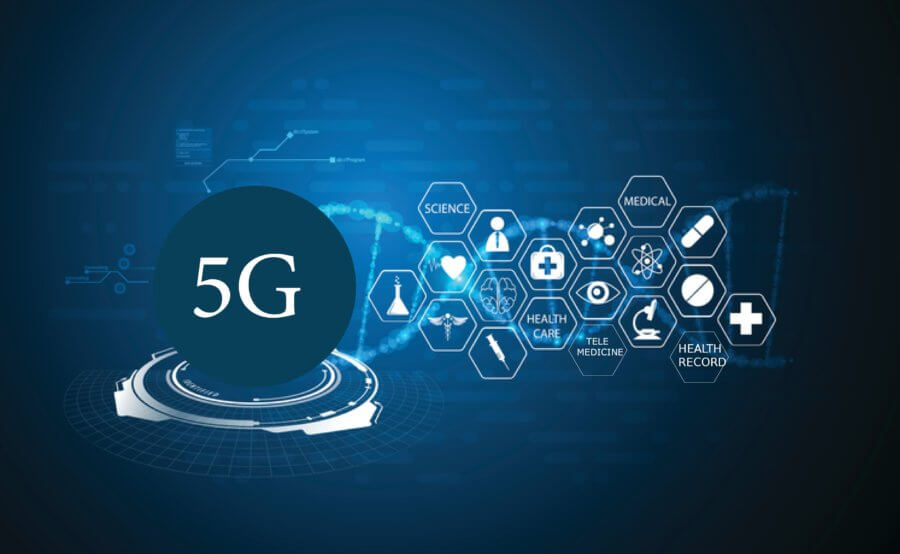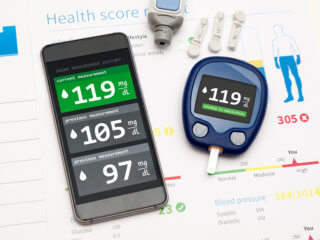Will 5G be a key enabler of healthcare transformation?
How does it feel when you are surfing, and you have to wait for a couple of minutes just to open a single web page? That is the most nuisance experience to most of the internet surfers. We all want a speedy internet when browsing, and that is why all the telecommunication companies all over the world have been on the go to boost the speed of browsing. For us to achieve an entirely new browsing experience, however, we are going to have a wholly original form of wireless technology, hence the need to explore the 5G.
The world technology is changing at an unprecedented speed in the field of wireless connectivity. Apart from the mushrooming of many devices that need a wireless connection, ranging from mobile phones, cars, door locks, wearables, etc., and more devices are being invented every day that require internet connectivity.
Gartner speculates that by the year 2020, 20.8 billion devices will have access to the internet. When you compare this estimated number, with the current estimated connected devices which stands at 6.4 billion, the gap is too big and therefore that calls for many devices to be connected within less than two years.
So, what exactly is 5G? “G” stands for Generation. 4G is the predecessor of 5G, with the current 4G LTE being the fastest version of the 4G. Therefore, 5G will boost the speed and also accommodate numerous Internet-connected devices being made every day. The two leading internet service providers; AT&T and Verizon are testing 5G. However, experts have it that we expect that 5G will only be broadly available in 2020.
Impact of 5G on different sectors
- Jobs and growth: 5G a key technology for many growing U.S. business sectors, including software, video games, data analytics, and machine-to-machine (M2M) communication.
- Investments: Significant early investment in 5G will help close the gap in ultrafast mobile broadband between the U.S and other countries.
- Research: Sustained investment in the 5G study will begin to address shortcomings in cellular broadband availability in remote regions.
| Recommended for you | |
| World’s first medical device for Apple watch gets FDA approval | |
| How is AI transforming digital preventive healthcare? | |
| 25 Innovative digital health, eHealth, mHealth startups in UAE |
Why 5G matters for citizens?
- Demand: Consumers create an increasing amount of mobile traffic; which needs require extended capacity and lower latency. 5G will allow an anticipated peak data rate/ higher than 10Gbit/s matched to 300 Mbits/s LTE can provide today, consolidate with implicitly zero latency.
- Societal Innovation: 5G will support applications and industries of the future, such as innovation healthcare services, self-driving cars, and the next production of industrial automation. 5G will mean walking away from best effort towards solely reliable communication. Flexible intercommunication with subsisting access technology. e.g. LTE and Wi-Fi with modern techniques generate a design that is future evidence at least unto 2030.
- Internet of Things: 5 G will be devised for use cases extending from humans to machines, demanding more of the network. 5 G support the tremendous growth of machine-to-machine type communication, also called the Internet of Things (IoT), through adaptability, inexpensive costs and low dissipation of energy. At the same time, 5G will be stable and quick enough for every purpose.
- Energy and cost: 5G will lower costs and consumption of energy. The use of energy efficiency is an integral part of the design paradigm of 5G. Virtualized and sociable technologies will further facilitate global adoption. Taking all those factors together, 5G could access to a larger group of people and things.

Image courtesy of Ericcson
How is 5G transforming digital healthcare?
With the current improvements in the connection speeds, the relationship between the patients and the doctors is changing tremendously. The integration of electronic communication into medical care necessitated by these faster connection speeds has completely changed the relationship between the doctors and the patients. For example, nowadays, just from the comfort of their homes patients wear remote medical sensors, that transmit their sensitive signs to health care providers. This data is very crucial to doctors in the following listed ways:
- Medics can dynamically manage treatment plans of the patients.
- Allows physicians and caregivers to screen various vitals of the patients.
- Conduct discussion or even intervention over webcam.
However, with the current arrival of 5G networks, this recent medical trend will be taken to the next higher level and significantly provide an economic boost to the medical fraternity.
According to IHS Markit, more than $1 trillion in products and services will be realized in the global healthcare sector in the year 2035.

Image courtesy of IHS Technology
Impact on medical devices – IoT, Wearables, Data exchange
5G is a representation of an entirely new approach that will enable you to meet all digital networking and upgrade your healthcare experiences. To maintain your wellness, it presents you with three capability areas.
Massive Internet of Medical Things(IoMT)
Massive IoT helps you stay healthy. Massive IoT is directly related to the internet of medical things ecosystem encompasses low bit rate, billions of low energies connected medical and health-monitoring devices, clinical wearables and remote sensors. These instruments are very vital to doctors as they rely on them to instantaneously capture, collect and through electronic means receive patient’s medical data, e.g., physical activity, vital patient signs and they can also check if the patients are taking medicine according to the prescriptions.
The IoT/IoMT field is staged to grow as the patient wearable market, which will compose of remote and on-site devices, expand from 8 million shipments from 2017 to 33 million in 2021.
Also, the global income of IoT annually in health care are approximated to be over $27 billion by 2025(Gold Sachs, 2017).
Enhanced Mobile Broadband (eMBB)
5G eMBB technology is set to save you a trip to the doctor. To those who don’t like frequent visits to doctors, well with the 5G enabler taking its place in the medical field, the doctor will now visit you. 5G is expected to use a substantially enhanced data rates and high connectivity which will make it easy for the doctors to carefully study, and analyse a couple of patient medical data simultaneously. Now, the doctors are in a position to bid highly for specific patients.
eMBB can sustain a personalised application for healthcare and involvements such as simulated reality (SR) and also live video streaming. Doctors will use these tools, while in their bedless hospitals to administer remote virtual care to patients.
It will be done through 3D/UHD video telepresence. Similarly, 5G will go an extra mile to offer training services to medical students especially in the areas of physiology and diagnosis of stroke.
Data exchange or mission-critical services
5G mission-critical services could save your life. To allow doctors to deliver remote health care, 5G has enabled the devices and networks communication and protection of mission-critical messages. E.g., the 5G New Radio unified air interface is tailored to deliver deep and redundant coverage to connect medical sensors across some network nodes. The effect of this is that it boosts the reliability, e.g., one out of 100 million packets lost, it reduces latency, e.g., just as low as one millisecond, and lastly, it ensures transmissions that are very critical such as medical emergencies prioritised over the other broadcasts
5 Advantages and disadvantages of 5G in the healthcare market
The implementation of change is not always straightforward. 5G is expected to have a tremendous impact on various groups ranging from the students to all professionals such as doctors and teachers, just to mention a few. However, what is essential is that 5G is expected to revolutionise the technology regarding speed and bandwidth connectivity.
Advantages
There are various advantages of 5G network technology on healthcare market:
- It is more efficient and efficient in handling patient’s data, both large data and vital data.
- It offers a technology to gather all networks on one platform.
- It has the capability of supporting more than 60,000 connections due to its extensive broadcasting data (in Gigabit).
- It is easily manageable with the previous generations.
- The technology provides consistent, uniform, and uninterrupted connectivity across the world.
- Enables to doctors to be able to attend to anyone around the world without necessarily having to travel physically.
- At last, the possession of high resolution and bi-directional substantial bandwidth shaping.
These advantages have made the treatment of patients more comfortable and frugal, implying that a doctor attends to a patient located in remote part of the globe.
Disadvantages
Most of the geographical regions of the world lack technological advancements and security is at stake. Therefore, though 5G technology might be researched and highly conceptualised to solve radio signal issues and mobile problems, the 5G technology in healthcare is being faced with the following shortcomings:
- Due to lack of enough support and redundancy in most parts of the world, it seems very hard to achieve high speed (though in future it might be).
- The technology is still under process, and the research on its feasibility is on the move.
- With the introduction of 5G, many of the old devices will be rendered incompetent to 5G and will need to be substituted by new ones which are technically an expensive deal.
- Naturally, development of the infrastructure to support this needs a huge sum of money which will see most reluctant to adopt this technology in medical health.
- Security is of much concern to patients. Most of the privacy and security issues are yet to be solved.
The outlook for the next five years
Wireless communication is taking the world at an unprecedented move, and soon it will dominate everything, everywhere and mainly the 5G radio networks technologies are behind this dominance. Machine to machine (M2M) communications now stands at 600-800 million active cellular M2M devices by 2018. The most significant of this is that 5G will be driven further to application powered connectivity which will be deployed to different technologies, users, and devices, towards realising the concept of the Internet everywhere.
A new development is always full of challenges, and like all technologies, 5G use in medical health has significant problems to deal. Still, there are many nations using 2G, and 3G technologies and 4G to them is just another big nightmare. So, we can’t really predict what future has in store for this revolutionary technology?
Image credit:www.istockphoto.com


















machine learning is not ai
The world technology is changing at an unprecedented speed in the field of wireless connectivity. Apart from mushrooming of many devices that need a wireless connection, ranging from mobile phones, cars, door locks, wearables, etc., and more devices are being invented every day that require internet connectivity.